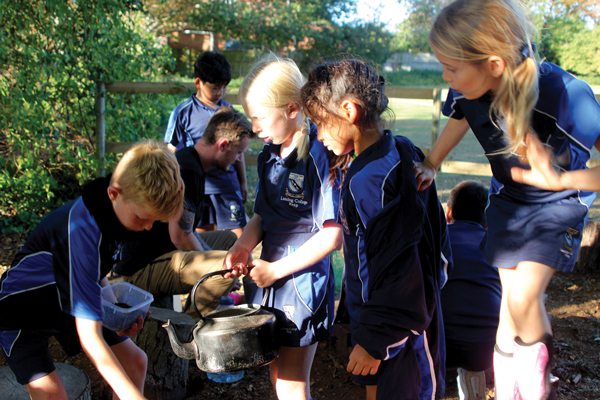
by Dr Ian Cunningham
SML College
I would guess that no one ever said on their deathbed: “I wish I had got better grades at GCSE”. In fact, research on deathbed regrets suggests that people in different parts of the world show similar responses. A top regret, for instance, is around relationships – and people feeling that they may have neglected friends and loved ones or may have allowed work to dominate their lives. Others regret the kind of career they have had and feel that they have not fulfilled themselves through their work life.
There is a link here to Freud’s comment that “love and work are the cornerstones of our humanness.” Note that he didn’t say that these are the only things that matter. But if we put his saying alongside the evidence of people’s regrets, it’s quite clear that love and work are crucial to a good life.
If we take work first, then research shows that many people feel unsatisfied with the work that they do. The research shows that they needed better advice when they were younger to make career choices. In mentioning GCSEs at the start, one of the things that’s apparent is that people often choose GCSEs based on such factors as liking the teacher or the views of others.
What is necessary is for the child to be helped to explore what a good life would mean for them and what that would mean therefore in terms of things that they need to learn to help them to get there. At Self Managed Learning (SML) College we start our time with children who join us by asking them about their lives and about things they like and don’t like and about what a good life might mean for them – and therefore what they need to do to prepare themselves for that future. Now we recognise that, especially for younger children, they may not have very clear ideas. That doesn’t matter. It’s more about providing a space so that there is continual exploration of what an individual wants for themselves and for their life in the future. However, by the time students get to 13 or 14, clearly there are choices around what to do at GCSE. Those choices need to be made on the basis of how that helps the person to prepare for the future that they want.
The other side of Freud’s view is about importance of love. What he meant was not erotic love, but rather the ability to have loving relationships with those around us. It might be a more brotherly/sisterly kind of love or it might be a generalised love for humanity. Whatever focus we put on it, the link to deathbed regrets about relationships becomes relevant.
Schooling has become such an individualistic enterprise that, for instance, if you help a friend with a test, it’s called cheating and you get punished for it. In life, cheating is essential – that is, helping people. It is the cornerstone of good relationships. In our College we don’t have such testing. It’s quite common for young people to help and support each other in their learning and to take this beyond when they leave us at 16. For instance, research on former students has shown that one of the key things they comment on learning at the College is what they often call their social skills. They see themselves as being able to relate to others effectively and it actually goes beyond just skills. It’s clear that they value having been in a community that is caring and supportive and that they have learned to engage with others in a truly human way. We know that this is one of the major criticisms of employers about people coming out of the education system – that they’re not good at working in teams and relating effectively to others within the workplace.
When I say that it’s more than skill, it is because what young people learn in the community is about caring about others and demonstrating that care. By being in a small community that allows young people to really know those around them they can be highly supportive and caring to others.
In a court case about what constitutes suitable education, the judge defined it in the following terms: “To prepare children for life in a modern civilised society and to enable them to achieve their full potential”. I would go further than this. Although achieving full potential is clearly what we are aiming for, it has to be not just preparing people to fit in within society, but to be able to be themselves and to live a good life. One that is more than just fitting in. As each person is different, so they need to pursue the kind of learning that will give them a good life. This means not having a standardised curriculum and instead encouraging each young person to see who they can become and how they can achieve that.
Dr Ian Cunningham, Chair of Governors, Self Managed Learning College, Fishersgate, BN41 1QH. ian@smlcollege.org.uk






 Simple activities such as tree climbing and den building are rich in learning opportunities and should not be underestimated. When climbing a tree, children should be encouraged to consider their physical space, where their feet need to be placed, whether they feel comfortable and how high they think they should climb in order to stay safe. Parents should always be there to supervise but should contemplate the level of support given in order to develop their child’s own risk awareness and physical resilience. The simple act of climbing trees builds upper body strength, core stability and balance which are all gross motor skills which support progress in writing and Reception readiness.
Simple activities such as tree climbing and den building are rich in learning opportunities and should not be underestimated. When climbing a tree, children should be encouraged to consider their physical space, where their feet need to be placed, whether they feel comfortable and how high they think they should climb in order to stay safe. Parents should always be there to supervise but should contemplate the level of support given in order to develop their child’s own risk awareness and physical resilience. The simple act of climbing trees builds upper body strength, core stability and balance which are all gross motor skills which support progress in writing and Reception readiness. There is so much more to writing than tracing and forming letters. The simple act of taking your child to the woods gives them the chance to explore, climb trees, collect leaves and acorns, swing from branches, carry and roll logs and dig. These simple activities can all contribute to your child’s ability to be able to physically write when they enter their Reception year. Why not enhance your trip to the woods by taking some potato peelers and whittling freshly cut branches? A simple activity that teaches perseverance and concentration, requires force and control and uses both sides of the body, supporting progression in writing without actually writing.
There is so much more to writing than tracing and forming letters. The simple act of taking your child to the woods gives them the chance to explore, climb trees, collect leaves and acorns, swing from branches, carry and roll logs and dig. These simple activities can all contribute to your child’s ability to be able to physically write when they enter their Reception year. Why not enhance your trip to the woods by taking some potato peelers and whittling freshly cut branches? A simple activity that teaches perseverance and concentration, requires force and control and uses both sides of the body, supporting progression in writing without actually writing.










